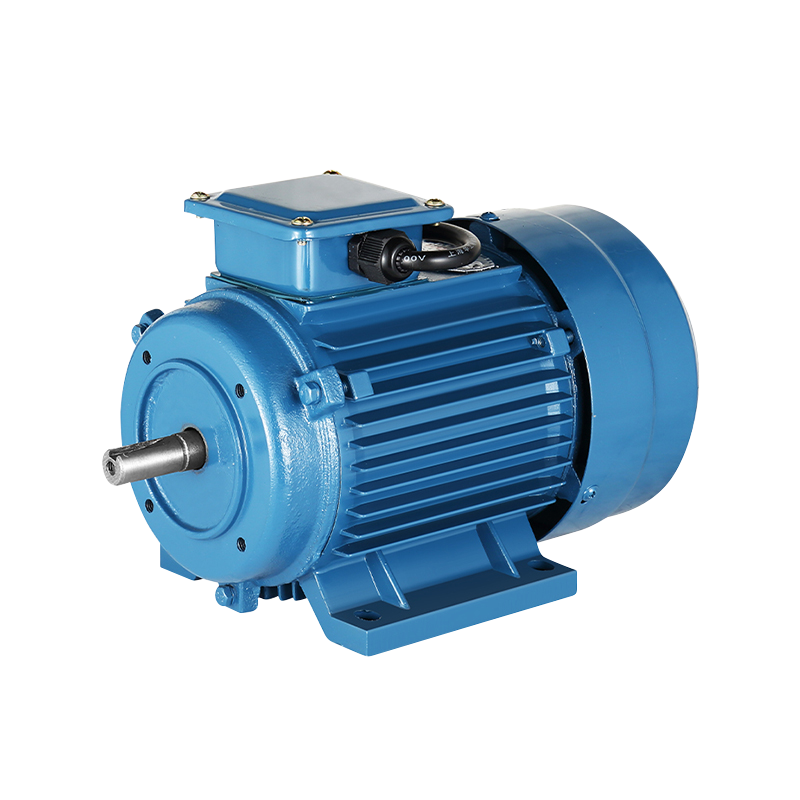Single-Phase Asynchronous Electric Motor: Enhancing Efficiency and Reliability in Modern Applications
In the realm of electric motors, the Single-Phase Asynchronous Electric Motor is increasingly recognized for its efficiency, reliability, and versatility. As industries and consumers seek cost-effective and durable solutions for powering various devices and equipment, this type of motor continues to play a pivotal role. By leveraging the simplicity of single-phase power with the robust design of asynchronous motors, the Single-Phase Asynchronous Electric Motor is becoming a key player in both industrial and residential applications.
The Single-Phase Asynchronous Electric Motor operates on a single-phase alternating current (AC) power supply. Unlike three-phase motors, which use three-phase power to create a rotating magnetic field, single-phase motors rely on a single-phase power source. The term "asynchronous" refers to the fact that the motor’s rotor speed does not synchronize exactly with the frequency of the power supply but operates at a slightly different speed, determined by the load.
This motor type is known for its simplicity and ease of use. It typically consists of a stator, rotor, and a starting mechanism to help the motor initiate rotation. The rotor receives a magnetic field from the stator, which induces current and generates torque to drive mechanical loads. Despite its straightforward design, the Single-Phase Asynchronous Electric Motor provides reliable performance for a wide range of applications.
The Single-Phase Asynchronous Electric Motor is highly versatile and finds applications across numerous sectors. In residential settings, these motors are commonly used in household appliances such as washing machines, refrigerators, and air conditioners. Their ability to operate effectively on standard single-phase power supplies makes them ideal for everyday use in home environments.
In industrial and commercial settings, the motor supports various machinery and equipment. It powers pumps, fans, and small conveyor systems, providing reliable performance for routine operations. Its simplicity and durability make it suitable for environments where maintenance and operational complexity are concerns.
One of the significant advantages of the Single-Phase Asynchronous Electric Motor is its cost-effectiveness. The motor’s design is inherently simpler compared to three-phase motors, to lower manufacturing and maintenance costs. This affordability makes it an attractive option for applications where budget constraints are a factor.
Economic efficiency is a hallmark of the Single-Phase Asynchronous Electric Motor. Its straightforward design and minimal components result in reduced production and maintenance costs. This cost-effectiveness extends to operational expenses as well. The motor’s efficiency in converting electrical energy into mechanical power helps to keep energy consumption in check, to lower utility bills.
Operationally, the Single-Phase Asynchronous Electric Motor offers reliable performance with minimal downtime. Its design is robust and capable of handling various loads without significant wear and tear. This reliability is essential for applications that require consistent performance, such as in household appliances and small-scale industrial equipment.
The motor's ease of installation and operation further enhances its appeal. The Single-Phase Asynchronous Electric Motor typically requires less complex control systems compared to its three-phase counterparts. This simplicity makes it easier to integrate into existing systems and reduces the need for specialized maintenance.
Recent advancements in the design and technology of Single-Phase Asynchronous Electric Motors have introduced several improvements. Modern versions of these motors often incorporate advanced materials and engineering techniques that enhance their efficiency and durability.
One notable innovation is the development of improved starting mechanisms. New designs feature more reliable and efficient starting systems that enhance motor performance and reduce the likelihood of startup issues. These improvements contribute to smoother operation and longer motor life.
Energy efficiency is another area of focus. Advances in motor design have led to better energy conversion rates, reducing overall power consumption. These improvements align with global sustainability goals and help users achieve cost savings while minimizing their environmental impact.
-
Feedback

 English
English 中文简体
中文简体






